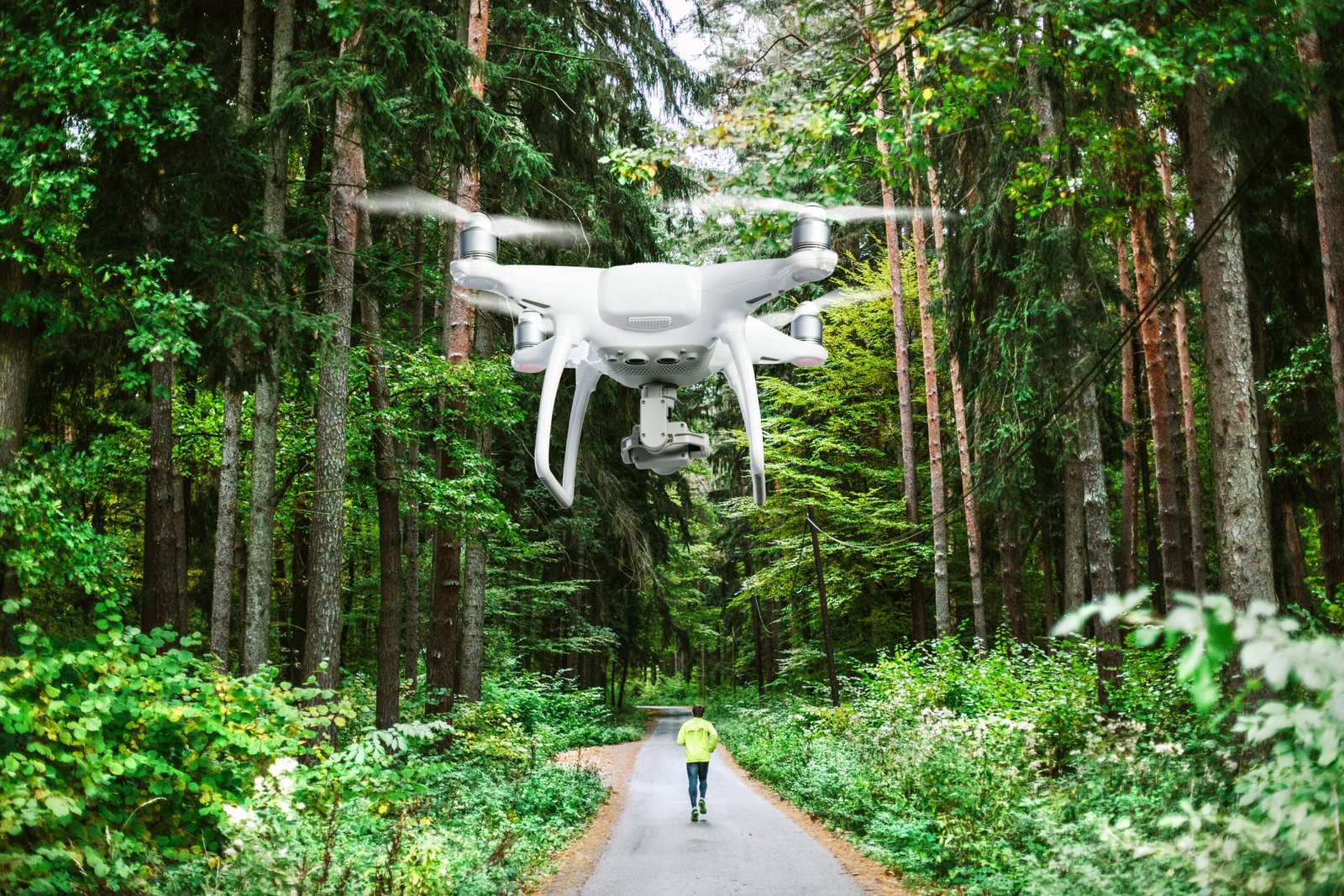Aviation Innovations
The Green Skies Ahead: Innovations in Sustainable Aviation
As the world increasingly confronts climate change, the aviation industry is soaring into a new era of sustainability. With cutting-edge technologies and innovative practices taking flight, the horizon looks promising for eco-friendly air travel. To navigate this transformation, aspiring aviators and aviation enthusiasts can turn to various educational resources and platforms. Here’s a look at what’s available.

### Aviation Schools by Types of Courses
Aviation education has diversified significantly, catering to different interests within the field. Various schools offer specialized programs that equip students with essential skills:
1. **Flight Training Schools**: These institutions focus on teaching students how to fly aircraft safely. Programs often include ground school training alongside hands-on flight experiences.
2. **Aeronautical Engineering Colleges**: For those intrigued by the mechanics of flight, these colleges delve into design, development, and maintenance of aircraft systems.
3. **Aviation Management Programs**: If you’re inclined towards business aspects such as airport operations or airline management, these programs combine aviation knowledge with management principles.
4. **Air Traffic Control Schools**: Aspiring controllers can find dedicated courses aimed at preparing them for the high-stakes environment of managing air traffic.
5. **Drone Technology Courses**: With drones becoming a significant player in both commercial and recreational sectors, specialized courses provide insights into unmanned aerial vehicle (UAV) operations and regulations.
Each type of course presents unique opportunities to contribute to a more sustainable aviation future through innovation and technology.
### Lists of Aviation Blogs, Websites, Social Media Sites
In an age where information is just a click away, numerous blogs and websites serve as valuable resources for anyone interested in aviation advancements:
**Airline Reporter**: A blog that covers news about airlines while focusing on innovations in passenger experience.
**Flying Magazine**: Targeting pilots and enthusiasts alike, this publication offers articles ranging from safety tips to reviews on the latest aircraft technologies.
**AeroNews Network**: This site aggregates news from various sources about developments in aviation law, safety regulations, and sustainability efforts.
**Simple Flying**: A social media favorite that combines engaging articles with vibrant images showcasing modern aircraft.
For real-time updates on sustainable aviation initiatives or innovations:
Follow hashtags like #SustainableAviation or #GreenAviation across platforms like Twitter and Instagram for a community-driven perspective.
LinkedIn groups focused on aerospace engineering discuss trends shaping eco-friendly practices in aviation industries globally.
### FAA Flight Schools / Airplane Schools / Simulators
The Federal Aviation Administration (FAA) plays a crucial role in regulating pilot training standards in the U.S., ensuring that schools meet rigorous criteria. FAA-approved flight schools are pivotal for those looking to gain their private pilot license or advance their skills:
1. **Part 141 Flight Schools**: These institutions follow structured curricula set by the FAA—ideal for students seeking professional careers quickly.
2. **Part 61 Flight Schools**: More flexible than Part 141 schools; they allow students to progress at their own pace while still meeting FAA requirements.
Additionally, many modern schools incorporate advanced simulators into their curriculum—providing an immersive learning experience without leaving the ground! These simulators allow students to practice emergency procedures or complex maneuvers safely—an invaluable asset toward fostering responsible flying habits as we shift towards greener skies.
With these tools at hand—from diverse educational pathways to insightful online communities—the future of sustainable aviation is not just a dream but an achievable reality waiting to take off! The skies ahead are indeed green—and filled with potential for those ready to navigate them responsibly!
Flight Path to the Future: Innovations Shaping the Next Generation of Air Travel
As we soar into a new era of air travel, the aviation industry is undergoing transformative changes that promise to redefine our skies. With innovations emerging from various corners of technology and education, it’s essential to explore how these developments are shaping future pilots, engineers, and aviation enthusiasts. From specialized courses in aviation schools to informative blogs and social media platforms, let’s delve into this exciting landscape.
*Aviation Schools: A Spectrum of Learning**
The journey begins with education, where aspiring aviators can choose from a diverse array of courses tailored to different interests within the field. Aviation schools offer programs ranging from pilot training to aeronautical engineering. Here are a few types:
1. **Pilot Training Programs:** These courses focus on obtaining private pilot licenses (PPL), commercial pilot licenses (CPL), and instrument ratings. Institutions often incorporate flight simulators for hands-on experience before taking to the skies.

2. **Maintenance Engineering:** For those fascinated by aircraft mechanics, maintenance engineering programs teach students about aircraft systems, repair techniques, and regulatory standards.
3. **Air Traffic Control (ATC):** Future air traffic controllers learn skills necessary for managing air traffic safely and efficiently through specialized ATC courses.
4. **Aviation Management:** This program prepares students for the business side of aviation by covering topics like airport management, aviation law, and airline operations.
5. **Unmanned Aerial Systems (UAS):** With drones becoming pivotal in many sectors, UAS programs equip learners with knowledge about drone operations, regulations, and applications across industries.
*Staying Informed: Top Aviation Blogs and Websites**
In an ever-evolving industry like aviation, staying updated is crucial—enter the world of blogs and websites dedicated to sharing insights about trends and innovations. Here are some noteworthy sources:
**AirlineReporter.com:** A blog focused on airline news and reviews featuring unique stories from passengers’ perspectives.
**FlyingMag.com:** Packed with articles on flying techniques, gear reviews, safety tips—all catering directly to pilots.
**Skybrary.aero:** An invaluable resource offering comprehensive information on aviation safety and operational practices.
**AvGeekery.com:** Celebrating all things aviation with articles ranging from historical facts to contemporary developments.
For those who prefer social media engagement:
Follow hashtags like #avgeek or #aviationlovers on Instagram for stunning visuals.
Join Facebook groups dedicated to specific areas such as flight simulation or general aviation discussions.
*FAA Flight Schools: Structured Learning Paths**
When it comes down to formal training pathways in the United States, FAA-certified flight schools play a pivotal role in nurturing prospective pilots. These institutions adhere strictly to Federal Aviation Administration (FAA) regulations ensuring quality education while imparting essential skills required for safe flying practices.
Many FAA-approved flight schools utilize state-of-the-art simulators that replicate real-world flying conditions without leaving the ground—an exhilarating way for students to hone their skills under controlled settings before stepping into actual cockpits.
Furthermore, these flight schools often collaborate with local airports providing well-rounded experiences encompassing classroom learning alongside practical training sessions.

As we venture further into this decade marked by rapid technological advancements—from electric planes reducing carbon footprints to AI-driven air traffic management—the realm of aviation continues expanding before our eyes. By embracing innovative educational pathways along with valuable resources available online today—including dynamic blogs or networking on social media—the future generation stands ready not just to take flight but also revolutionize how we perceive air travel itself! So buckle up; it’s going to be a thrilling ride!
The Future of Flight: Innovations Shaping the Aviation Industry
As we soar into a new era of aviation, an array of innovations is transforming how we think about flight. From advanced training methodologies to cutting-edge technology in aircraft design, the possibilities are endless. In this blog post, we’ll explore the types of aviation schools available today and highlight essential resources for aspiring aviators.

### Aviation Schools by Types of Courses
Aviation education has diversified dramatically over recent years, accommodating various career paths within the industry. Here are some notable types of courses you might find:
1. **Pilot Training Programs**: These programs focus on teaching students how to fly different aircraft. They typically include ground school lessons covering aerodynamics, meteorology, navigation, and regulations, followed by actual flight training with certified instructors.
2. **Aircraft Maintenance Engineering**: For those intrigued by the mechanical side of aviation, these courses cover everything from basic avionics to complex systems maintenance. Students learn essential skills that ensure airplanes remain safe and efficient.
3. **Air Traffic Control Training**: This specialized program prepares individuals for one of the most demanding roles in aviation—managing air traffic safely and efficiently. Students undergo rigorous training that combines theoretical knowledge with practical simulations.
4. **Aviation Management Degrees**: Focusing on the business aspect of flying, these courses delve into airport operations, airline management, and regulatory issues affecting the industry. Graduates often find themselves well-prepared for leadership roles in various sectors.
5. **Commercial Drone Operations**: With drones becoming increasingly prevalent in many industries—from agriculture to photography—courses focusing on drone piloting are gaining popularity. They teach students about regulations and operational protocols specific to unmanned aerial vehicles (UAVs).
### Lists of Aviation Blogs, Websites, Social Media Sites
The digital landscape is teeming with valuable resources for aviation enthusiasts and professionals alike. Here’s a curated list to help you navigate through it all:
**Blogs**:
– *AirlineReporter*: Focuses on airline news and travel experiences.
– *Flying Magazine*: Offers insights ranging from pilot tips to aircraft reviews.
– *Jetwhine*: An engaging take on aviation topics including technology advancements.
**Websites**:
– *AOPA (Aircraft Owners and Pilots Association)*: A hub for pilots seeking resources and advocacy.
– *FlightAware*: Real-time information about flights worldwide.
– *AvGeekery*: Celebrates all things aviation with articles that captivate enthusiasts.
**Social Media Sites**:
– Instagram accounts like @aviationdaily provide stunning visuals from around the world.
– YouTube channels such as *Mentour Pilot* break down complex topics into digestible content.
– Twitter handles like @FlyByWireSim keep followers updated on simulation innovations.
### FAA Flight Schools/Airplane Schools/Simulators
When it comes to formal education in flying or maintaining aircraft, FAA-approved schools lead the charge. These accredited institutions meet stringent safety standards while providing quality instruction across various disciplines:
Many FAA flight schools offer integrated programs where students can earn their private pilot licenses alongside advanced certifications like instrument ratings or commercial licenses.
Notably, airplane schools often incorporate simulator training into their curricula—an invaluable tool that allows students to practice emergency procedures without risk while gaining critical experience navigating various flight scenarios under realistic conditions.
In summary, as technological advancements continue reshaping the skies above us, so too does our approach to learning within this dynamic field. Whether you’re interested in flying high or keeping planes soaring smoothly through meticulous maintenance work or effective traffic management—the future is bright! Embrace these educational pathways and be part of the exciting evolution occurring within the world of aviation!
The Green Skies Ahead: Sustainable Innovations in Aviation
As the aviation industry continues to evolve, sustainability has emerged as a critical focus. With increasing awareness of environmental impacts, innovative solutions are being developed to reduce carbon footprints and promote greener practices. To navigate this transformative landscape, aspiring aviators can access various educational resources tailored to their interests and career goals.
*Aviation Schools by Types of Courses**
The journey into aviation begins with education, and there is an abundance of options available for those eager to take flight. Aviation schools offer diverse programs catering to different aspects of the field:

1. **Pilot Training Programs**: These courses focus on the technical skills needed to operate aircraft. From private pilot licenses (PPL) to commercial pilot licenses (CPL), students gain hands-on experience that prepares them for real-world flying.
2. **Air Traffic Control**: Specialized curricula teach students how to manage air traffic safely and efficiently. Graduates play a crucial role in maintaining orderly skies while ensuring flights operate smoothly.
3. **Aviation Management**: For those interested in the business side of flying, aviation management courses cover topics such as airport operations, airline marketing, and logistics—essentially everything needed for running successful aviation enterprises.
4. **Aircraft Maintenance Engineering**: This program equips students with the knowledge required to troubleshoot and repair aircraft systems. As sustainable technologies emerge, understanding new eco-friendly materials becomes increasingly vital.
5. **Unmanned Aerial Systems (UAS)**: With the rise of drones, many institutions now offer courses focused on UAV technology, regulations, and applications—a rapidly growing sector within aviation.
Exploring these varied pathways provides prospective aviators with rich opportunities aligned with their passions while contributing positively to industry sustainability.
*Lists of Aviation Blogs, Websites, Social Media Sites**
Staying informed about the latest advancements in sustainable aviation practices is essential for both professionals and enthusiasts alike. Here’s a compilation of valuable online resources:
**Aviation Week Network**: A leading source for news covering all aspects of aerospace innovation.
**FlightGlobal**: An extensive database offering insights into airlines’ efforts toward sustainability.
**The Air Current**: Focuses on news analysis related specifically to market shifts in airlines aiming for greener operations.
**Simple Flying Blog & Site**: Offers updates on current events along with expert opinions on how airlines can innovate sustainably.
**Reddit’s r/flying Community**: A vibrant forum where pilots share experiences and discuss eco-friendly practices in aviation.
Additionally, popular social media platforms like Twitter (#AvGeek) or Instagram provide a visual feast featuring stunning aircraft photos alongside discussions about sustainability trends within the community.
*FAA Flight Schools/Airplane Schools/Simulators**
For those ready to take action towards becoming licensed pilots or specialists in other areas of aviation, FAA-approved flight schools remain indispensable resources. These institutions uphold rigorous training standards that ensure safety while equipping students with crucial skills.

Many FAA flight schools offer advanced simulators that mimic real-life flying scenarios—perfecting techniques without leaving the ground! Simulators not only minimize fuel consumption but also allow trainees from diverse backgrounds unlimited opportunities for practice without environmental impact concerns.
In conclusion, as we gaze upon the horizon marked by promising green skies ahead, it’s clear that sustainable innovations are reshaping our beloved industry. By diving into educational avenues and utilizing available resources—be it blogs or reputable flight schools—we can actively participate in creating a more environmentally responsible future for aviation! So buckle up; it’s going to be an exciting ride!
Aviation Innovations: How Drones Are Revolutionizing Delivery Systems
In an age where speed and efficiency reign supreme, the aviation industry is undergoing a transformation that promises to redefine logistics. At the forefront of this change is drone technology, ushering in a new era of delivery systems that are not only faster but also more sustainable. As we delve into this revolution, it’s crucial to understand the interplay between aviation training and the burgeoning world of drones.
To begin with, proper training remains paramount in ensuring safety and effectiveness within aviation. The advent of sophisticated flight simulators has made it easier for aspiring pilots and drone operators to hone their skills without ever leaving the ground. These simulations provide realistic environments that replicate various conditions pilots might face, from turbulent weather to emergency scenarios. This immersive experience fosters better decision-making skills while minimizing risks associated with traditional flight training.

For anyone looking to stay updated on aviation trends or seeking valuable resources, the internet offers a wealth of information through dedicated blogs and websites. Some notable mentions include Aviation Week Network, which covers everything from aerospace technology to defense; Flying Magazine, renowned for its insightful articles on pilot experiences; and The Drone Girl blog which focuses specifically on drone innovations. Social media platforms like Twitter and Instagram also serve as vibrant hubs for aviation enthusiasts. Follow hashtags such as #DroneDelivery or #AviationNews for real-time updates from industry experts and hobbyists alike.
Moreover, educational opportunities abound for those eager to explore careers in aviation or deepen their knowledge about drones. Numerous online courses cater to both novice learners and seasoned professionals looking to enhance their skills. Websites like Coursera or Udemy offer specialized programs ranging from basic piloting techniques to advanced UAV operations—perfectly blending theoretical knowledge with practical application.
Ground schools play an essential role too, providing structured learning environments where students can gain foundational knowledge before stepping into aircraft cockpits or controlling drones. These institutions cover critical areas such as air traffic regulations, navigation principles, meteorology, and more—ensuring that future aviators are well-prepared for any challenge they might encounter.
As demand grows for unmanned aerial vehicles (UAVs), so do job opportunities within this exciting sector. Drone pilots are increasingly sought after in industries ranging from agriculture to real estate photography and package delivery services. Companies are leveraging UAVs not only for their speed but also for their ability to access hard-to-reach areas safely and cost-effectively.
The Federal Aviation Administration (FAA) plays a vital role in regulating these advancements within drone technology. Their guidelines ensure that drone operations maintain safety standards while fostering innovation in commercial applications. For those interested in pursuing a career related to drone usage or simply wanting robust information on regulations, visiting FAA’s website is invaluable.
In conclusion, we stand at a pivotal moment in aviation history where drones are reshaping delivery systems around the globe. With continuous advancements in technology paired with comprehensive training programs designed for both traditional pilots and aspiring drone operators, the sky is not just the limit—it’s merely the beginning! Whether you’re contemplating a career shift into aviation or simply fascinated by these flying machines’ potential impact on daily life , now is undoubtedly an exciting time to get involved!




